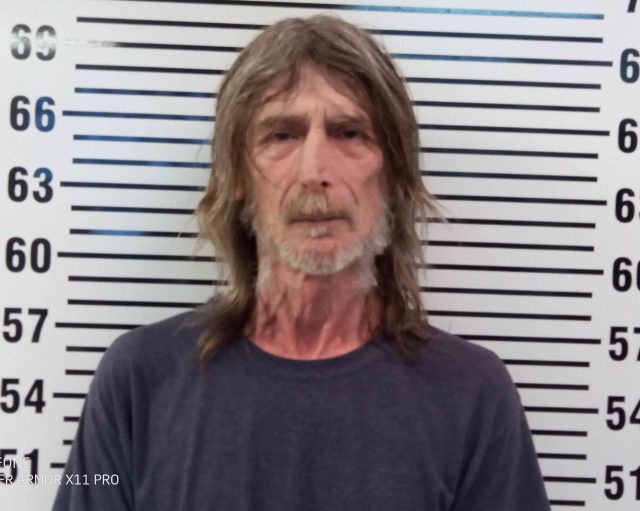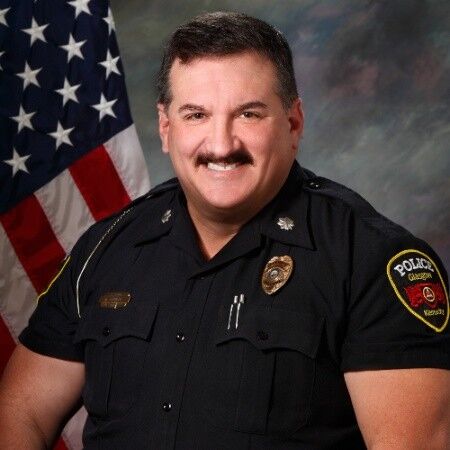Faithful Friends
Published 12:00 am Tuesday, March 23, 2010

- Hunter Wilson/Daily NewsA popular dog urn is displayed Friday at Faithful Friends.
When Jennifer Jones’ childhood dog died at age 18, her family buried the animal in her parents’ backyard.
After both of her parents died and the family sold their house, “Dusty was buried in somebody else’s backyard,” Jones said.
It was that experience that helped persuade Jones and her husband to open the area’s only pet crematorium, Faithful Friends. Five years later, the business has grown, cremating at least one animal a day.
“Your pet is an (important) member in your household,” she said, “and when it comes time for them to leave this world, it’s hard for you to think about putting them in the backyard or having them disposed of.”
That’s where Jones comes in.
Jones runs her pet crematory on Nashville Road near Rich Pond Market & Deli. In the front office, the walls are lined with urns and memorial items, from necklaces to picture frames.
A few memory markers and a memorial stone bench sit in a corner. Customers request different items. Some just want their pet cremated and take the remains home in an urn the crematory furnishes.
Others invest in expensive urns. Some have already buried their pet and are looking for a marker. Others have their animals cremated, but they also want a marker to memorialize their late pet.
One client plans to have his dog’s ashes buried with him one day. Another client has brought multiple deceased pets to Jones. He gets a similar urn for each dog, each of which was a different breed.
Jones mainly cremates dogs and cats, but she has seen her fair share of unusual pets. She has cremated hamsters, snakes, iguanas and sheep.
“And we do have the occasional ferret,” she said.
The largest animal she has cremated was a goat. While she does not cremate humans, Jones uses a human crematory for her clients’ pets. The crematory holds up to 500 pounds and prices range from $155 for the small animals to $419 for large animals.
In a back room, a crematory sits in the middle of the room. Next to the machine sits a large refrigerator, where animal remains are kept before cremation, and a bone processor, which crushes bones that cannot be cremated. In some cases, pet owners request that their animals’ bones remain intact and they are placed in the urn with the pets’ ashes, Jones said.
Workers generally pick up animals’ bodies from veterinarian clinics, but owners sometimes bring their pets into the crematorium. Workers place a numbered tag on the body and, after cremation, they put the tag in the urn.
“We want to make sure everybody knows that’s their pet,” she said.
Jones performed more than 365 cremations last year – an increase from previous years.
“I think cremation itself is becoming a larger trend,” she said. “I think people are more accepting of that.”
Families are becoming more mobile, and, therefore, it’s impractical for many people to bury their animals. In fact, some clients have exhumed their animals’ bodies and brought them in to be cremated, Jones said.
Jones, who graduated from Western Kentucky University, was employed as a social worker when she had twins. After she quit her job to stay home with her children, she started looking for business opportunities.
Her husband, Tommy Jones, is in the funeral business, selling hearses and limousines from the same building that houses Faithful Friends. After her late parents’ house sold, leaving the family dog buried in the yard, Jones started thinking about her own dogs and a lack of services for local people who lose their pets.
“It just seemed like a natural niche,” she said. “We’re both animal lovers. We have a 14-year-old and a 15-year-old (dog), which were our first babies.”
Jones became certified in cremation, taking a class that taught her how to run the machine.
For Jones, the most enjoyable part of running a pet crematorium is meeting other pet owners, listening to their stories and being able to identify with them.
However, hearing the heartbreaking stories and being able to understand the bond a person has with his pet is also the most challenging aspect of her job.
“I think the most difficult part, it isn’t the cremation,” she said. “It’s identifying with the loss they’re going through. When they come in and their dog is 15 years old and they tell me their story, I can identify with that.”
Her goal is to continue to grow and serve those people, she said.
“Even though that’s the most difficult, (client interaction) is the most enjoyable part,” she said, “to know that we’ve helped them through a difficult time.”






